24 Dec 2024
How Interoperability in Healthcare is Transforming Modern Care
Matthew Connor
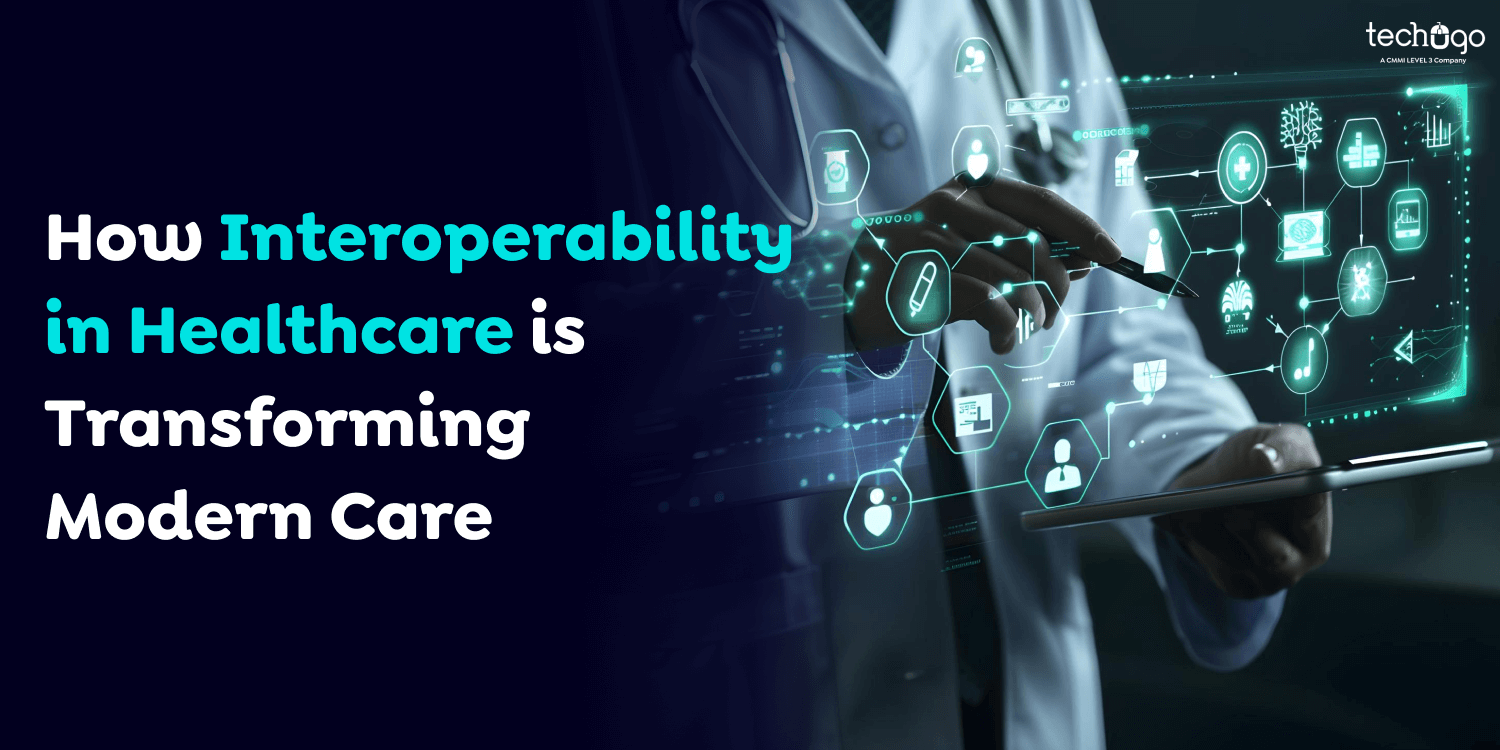
Have you ever thought about how doctors at various hospitals manage to access and share your health records so seamlessly? This is made possible through Interoperability in Healthcare. It refers to the ability of different healthcare technologies—ranging from the software used at local clinics to the advanced systems in major hospitals—to communicate and exchange information effectively.
Through healthcare interoperability, systems can communicate with each other, hence providing practitioners with real-time patient data. This expedites diagnosis and treatment and enhances the chances of the patient’s survival. It also reduces redundancy, decreases mistakes, and promotes teamwork, which helps improve the value of the services received by clients and the services delivered by healthcare workers.
Are you ready to dive in?
If yes, then let’s get started!
Understanding Interoperability in Healthcare
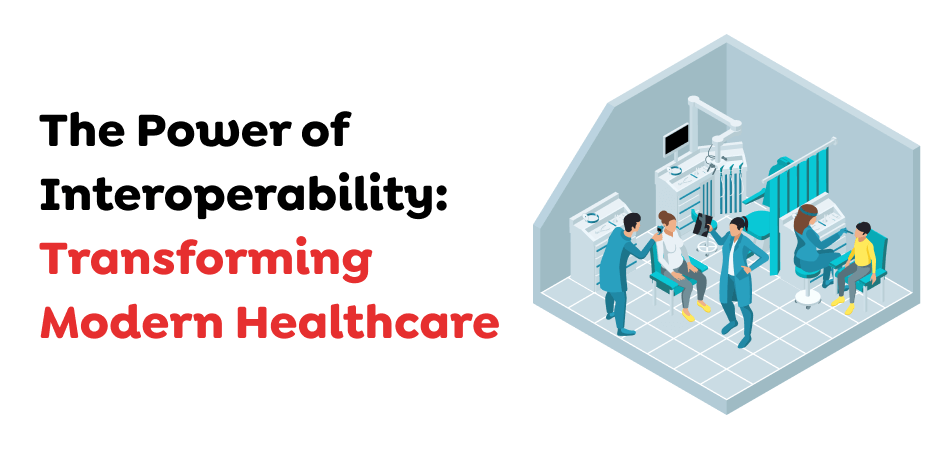
Healthcare interoperability is defined as a way of combining different healthcare information technology systems, such as EHR systems, laboratory management systems, and imaging systems. It allows these systems to share information and cooperate to form an environment where a patient’s needs meet with an integrated one.
This framework guarantees that doctors, nurses, and pharmacists, in particular, may safely access and exchange patients’ medical information in real time, irrespective of the particular care setting or the systems implemented by the latter. Due to increased collaboration and data optimization, interoperability in healthcare becomes beneficial for making accurate decisions to improve the quality of the services provided to patients.
Now, let’s discover the key advantages of healthcare interoperability.
Also Read : Caring at Fingertips: Revolutionizing Healthcare with Your Innovative App
Key Advantages of Healthcare Interoperability
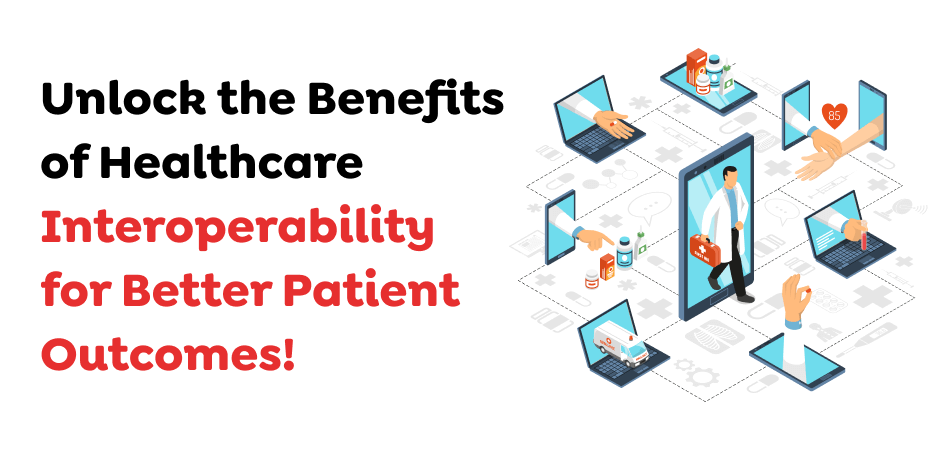
Healthcare interoperability offers a range of benefits that enhance patient care, reduce costs, and promote innovation. Let’s explore the transformative impact of this crucial technology.
1. Enhanced Patient Care:
When health information is exchanged, it helps doctors, nurses, pharmacists, and other caregivers to get the patient’s full information, which may be the central focus of the patient. All the information gathered about the patient’s medical history contributes to a proper diagnosis of the patient and appropriate treatment for the condition. For example, suppose a patient is receiving services from several doctors. In that case, all the doctors will be aware of the patient’s medical history so that there will not be a problem of one doctor diagnosing the patient and then another doctor prescribing the opposite medication for the same ailment.
2. Lower Costs and Greater Efficiency:
One of the robust advantages of Interoperability in Healthcare is cost saving. Thus, it reduces complexities such as duplicate testing, manual input, and output and grants safe transactions. This relieves time constraints and necessarily decreases the cost implications for both the health system and the individuals, improving the health system.
3. Improved Patient Safety:
The integration of real-time medical information guarantees that therapies and medications can be effectively monitored. For instance, recorded information on patients contains adverse drug reactions and intolerance to certain medications; this reduces the incidence of adverse events that risk occurring due to mistakes.
4. Stronger Public Health Management:
Compatible electronic systems can be very useful for identifying and handling diseases in the community. They allow for proper data capture and analysis, a function that becomes vital during effects such as pandemics. Observational data allows for tracking disease epidemic curves, assessing the impact of intervention measures, and responding promptly.
5. Bolstered Data Security:
While interoperability encourages sharing broader patient details, strong security measures ensure that the details are not jeopardized. Laws such as HIPAA in the United States or GDPR in the European Union retain strict standards, protecting the patient’s information from intruders and cyber-attacks.
6. Accelerated Technological Innovation:
Interoperability creates a standardized environment where developers and researchers can collaborate effectively. Coordination allows systems to enhance specific applications by leveraging factors like artificial intelligence diagnostics, telemedicine solutions, and data analytical technologies.
Moving forward, now let’s discover how implementing interoperability in healthcare can revolutionize patient care.
Also Read : Transforming Healthcare: How to Build an App Like GoodRx
Implementation of Interoperability in Healthcare
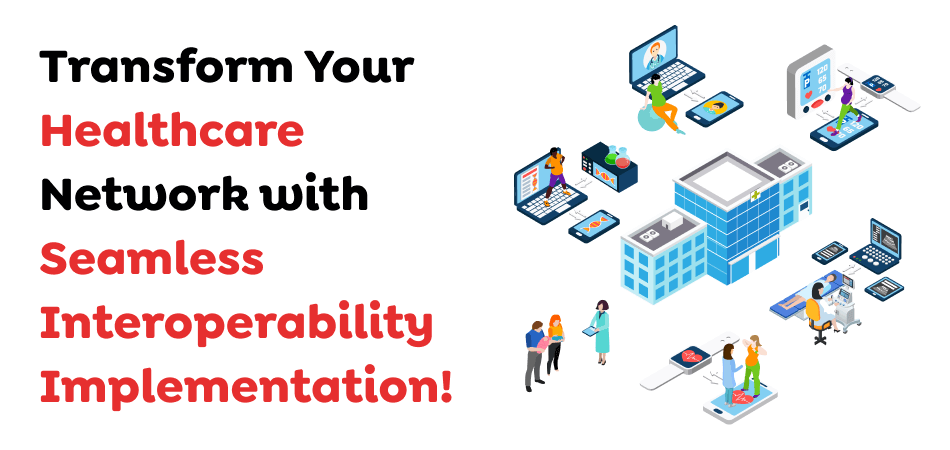
Interoperability in healthcare is a transformative plan that guarantees seamless contact between diverse healthcare systems and technologies. Comprehending how to improve interoperability in healthcare involves executing a structured process backed by advanced technologies that enable better data sharing, improve patient care, and boost operational efficiency across the ecosystem.
Steps to Implement Healthcare Interoperability
- Establishing Clear Objectives: The process begins by identifying specific goals, such as improved patient outcomes, streamlined data sharing, or enhanced operational efficiency. Formulating measurable goals is useful because it keeps everyone on the same page and in the same direction.
- Assessing Current Systems: All healthcare organizations should start with research on what kind of systems they currently have, where the flaws and what systems do not work in concert with one another. This includes assessing systems that pose barriers to integration as well as identifying the standards of data used at present.
- Adopting Industry Standards: Implementing widely recognized interoperability frameworks like HL7 (Health Level Seven) and FHIR (Fast Healthcare Interoperability Resources) ensures uniform data exchange. These standards form the base for other systems to enable interoperation between various systems.
- Leveraging Modern Technologies: APIs and AI significantly facilitate interoperability with the cloud platform. Some of these technologies include the creation of secure communication between hospitals, availability and access to patient records in real-time, and complex business analytics, which improve decision-making and, consequently, patient care.
- Ensuring Data Security and Compliance: Data security is important. Institutions must adhere to strict regulations, such as HIPAA or GDPR, to safeguard sensitive patient information while promoting confidence among users. Encryption, multi-factor authentication, and often auditing are valuable tools for guaranteeing strong security.
- Facilitating Stakeholder Collaboration: Interoperability is a shared process between providers, stakeholders, and regulatory agencies. One key area that facilitates implementation is conveying frequencies and achieving aligned goals.
- Testing and Continuous Improvement: Pilot testing interoperability solutions on a smaller scale helps identify potential issues before full implementation. Regular feedback and system updates ensure long-term efficiency and adaptability to evolving healthcare needs.
Technologies Driving Healthcare Interoperability
- Cloud Computing: Cloud platforms enable centralized data storage and real-time access, fostering collaboration among healthcare providers regardless of location. They also have scalability and cost features since they can handle an increasing flow of data.
- APIs (Application Programming Interfaces): GUIs are application interfaces that allow the integration of two distinct systems for data sharing. For instance, an API can integrate an EHR system with lab management software to make the latest test results available.
- Artificial Intelligence (AI): AI improves healthcare compatibility by translating data, differentiating patterns, and articulating healthcare tendencies. This helps make diagnosis quicker and more precise in identifying patients’ conditions, hence enhancing patients’ lives.
- Blockchain: Blockchain ensures secure and transparent data sharing, maintaining an immutable record of transactions. By using innovative technology, safeguarding the patient’s record and protecting it from being accessed by unscrupulous people becomes easier.
- Internet of Things (IoT): IoT devices, such as wearable health monitors and innovative medical equipment, contribute valuable real-time data to the healthcare ecosystem. Such devices are integrated into these systems to improve patient care by enhancing monitoring and preventive care.
Let’s explore the different levels of data interoperability in healthcare.
Also Read : The Ultimate Guide to Healthcare CRM Software Development: Enhance Patient Care
Different Levels of Data Interoperability in Healthcare
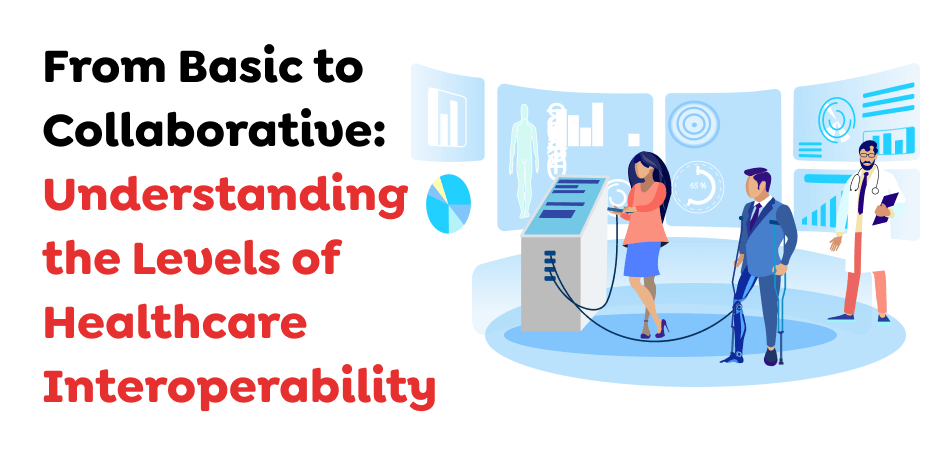
Interoperability in Healthcare plays a crucial role in enabling systems and devices to exchange information efficiently. It involves multiple levels that determine how well healthcare IT systems can work together, ranging from basic data transfer to highly integrated solutions. These levels are guided by industry standards and frameworks, such as those developed by the Healthcare Information and Management Systems Society (HIMSS). Here’s a breakdown of these critical stages:
1. Basic Interoperability:
This is the foundational stage, where data is transferred between systems without any transformation or interpretation. It ensures basic communication between healthcare technologies.
Example: A nurse downloads lab test results in PDF format from a diagnostic portal and manually enters the data into an electronic health record (EHR) system.
2. Structural Interoperability:
At this level, it is suitable for systems to share information in a given format so that information can be formatted to fall in the correct fields. This structure makes it easy to enhance the consistency and usability of the structure across platforms.
Example: A hospital transfers patient data to another facility, where the data is self-generated in appropriate fields through HL7 or FHIR.
3. Semantic Interoperability:
This advanced level guarantees the exchange of data between systems and the correct interpretation of this data using the right formats or terminologies.
For Example: An MRI scan recorded in a particular hospital’s system can be transferred to another one using different software. Both systems interpret and display the data appropriately.
4. Collaborative Interoperability:
Effective collaboration and working together in the caring system are key components at this stage. Analysed practices encompass data-sharing concerns with general objectives such as enhancing patient care outcomes, economic rationality, and privacy law compliance.
Example: Doctors and regulatory agencies work together by exchanging patient information correctly and efficiently while restrictions such as HIPAA apply.
After understanding its levels, now let’s delve into the challenges of interoperability in healthcare and explore how they impact seamless data integration.
Also Read : The Role of Mobile Apps in Canada’s Healthcare Industry
Challenges of Interoperability in Healthcare
Improving interoperability in healthcare has the potential to revolutionize the industry, making patient care more efficient and effective. Despite its importance, healthcare organizations face several challenges in creating interoperable systems. Below, we explore these challenges and provide actionable solutions to address them.
1. Aligning Collaborative Efforts Across Organizations:
Interoperability can be made effective through excellent cooperation with healthcare providers and networks, organizational executives, and regulatory bodies. However, a lack of orientation to the objectives may sometimes become counterproductive. To resolve this, organizations should establish a dedicated strategy focused on interoperability in healthcare and prioritize its implementation across all levels.
2. Managing Financial Constraints:
Lack of funds and technology constraints always jeopardize the emergence of multi-partner systems. Government funding approaches are available for implementing a health record system. Thirdly, imitating pricing paradigms companies use involves pay-as-you-go, which prolongs cost efficiencies even when progress is the focus.
3. Navigating Diverse Technology Needs:
Healthcare centers work under different laws and use different and personalized systems to suit their geographical or service type. The best practicable approach is using hybrid cloud environments, as these allow for the optimal integration of the data and customization to meet legal requirements.
4. Modernizing Legacy Systems:
Many healthcare systems still leverage systems that do not work well with modern interoperability standards. To close the gap mentioned above, one has to implement a hybrid cloud to extract and convert data from legacy systems to work in newer applications. This approach guarantees seamless transition, timely data transfer, and an efficient process in general.
By addressing these challenges proactively, healthcare organizations can unlock the full potential of interoperability in healthcare, driving innovation, improving patient outcomes, and building a more connected healthcare ecosystem.
Now, let’s discuss why Techugo stands out as the ideal partner for achieving seamless healthcare interoperability.
Also Read : How AI is helping the entire healthcare industry
How Techugo Supports Healthcare Interoperability
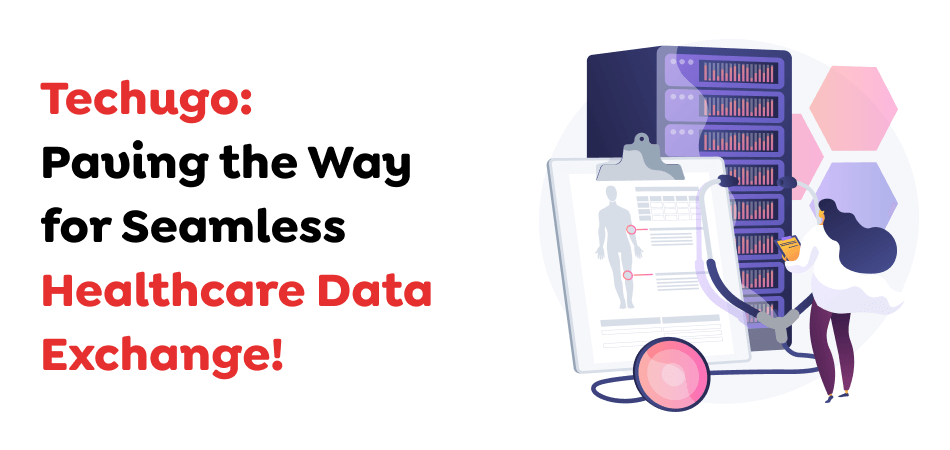
At Techugo, we partner with healthcare organizations to create and implement robust healthcare interoperability strategies. Our approach focuses on setting clear objectives, realistic timelines, and optimized budgets while ensuring seamless collaboration among all stakeholders for a smooth execution.
Our tailored financial and technical solutions are designed to meet the unique needs of healthcare providers. By leveraging advanced cloud technologies, our mobile app development company enhances system integration while preserving essential customizations and adhering to regulatory compliance standards.
Techugo excels in modernizing legacy systems to meet current interoperability standards. We ensure uninterrupted and secure data exchange between old and new systems, improving operational efficiency and elevating patient care outcomes.
Conclusion
Interoperability in healthcare is transforming the industry by fostering seamless data exchange, enhancing patient care, and driving operational efficiency. It gives healthcare providers real-time access to accurate medical records, enabling informed decisions, reducing errors, and improving patient outcomes. By embracing modern interoperability standards, the healthcare ecosystem can create a unified, patient-centered framework that benefits all stakeholders.
Overcoming challenges such as financial constraints, legacy systems, and diverse technology requirements is vital for achieving comprehensive interoperability. Through innovative solutions like hybrid cloud platforms and collaborative efforts, healthcare organizations can unlock new possibilities, ensure secure data sharing, and advance toward a more efficient and connected future.
Ready to take your healthcare system’s interoperability to the next level? Get in touch with Techugo today, and let us design a solution that perfectly aligns with your requirements.
Get In touch
We are excited to here from you and let’s start something special Together. Call Us for any inquiry.
Write us
sales@techugo.caJust a call away
About you




